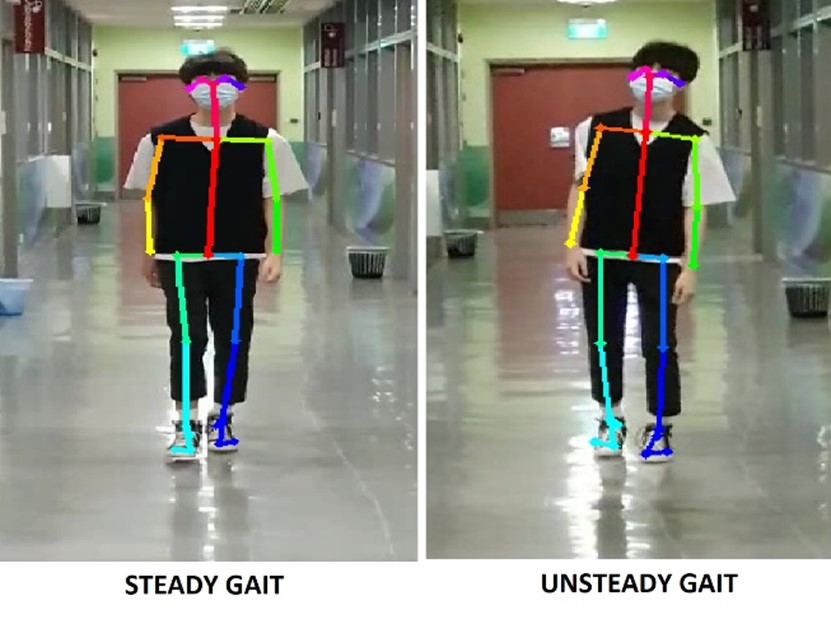Development & Training of an AI Application to Detect Unsteady Gaits
Singapore General Hospital (SGH) and Nanyang Polytechnic’s School of Engineering have collaborated to develop an innovative AI-powered gait analysis system for the hospital’s emergency department.
The innovative solution leverages existing CCTV cameras at SGH to monitor incoming patients and detect unsteady gait patterns, allowing staff to quickly identify and prioritise those needing urgent care. This not only improves patient outcomes but also streamlines resource allocation in the fast-paced emergency setting.
Led by Dr. Kong Wai Ming, our School of Engineering tackled several challenges in developing the system. The team engineered a highly accurate, computation-intensive deep learning AI model incorporating the Dynamic Time Warping (DTW) algorithm. They also overcame obstacles such as limited camera angles and the need to detect multiple patients from both front and back views using a single camera.

One critical requirement of this project was real-time feedback, to alert clinical staff when patients with unsteady gaits are identified, thereby preventing falls, and related injuries. Through rigorous program evaluation, the team achieved this essential feature, enhancing safety and ensuring that patients receive the immediate attention they require.
This collaboration has paved the way for further development of the gait analysis system. SGH and NYP are actively exploring avenues to refine the technology – with potential for its application in other medical institutions such as nursing homes, rehabilitation centres, and more.
A representative from Singapore General Hospital shares,
“Falls within hospitals are a major safety issue. 30-50% of falls result in injuries, contributing to an average increased hospitalization length of stay of 6.3 days and $14,000 additional medical costs per admission. In the elderly, falls often result in decreased mobility and loss of independence, thus burdening healthcare systems. Crowds, blind corners, and long corridors in the hospital make it difficult to have direct line of sight to all patients. As such, we wanted to explore using existing CCTV to keep an additional ‘eye’ on patients who may be unsteady and at risk of falling.
We learnt a lot during this collaboration. Although this was a pilot study in a controlled setting with pre-recorded CCTV footage, we believe that this project has potential and hope to carry on work to further improve accuracy and integrate it such that it can analyse real-time CCTV footage. If successful, we believe it can be used in many different hospital, emergency department, and outpatient clinic settings, and hence greatly enhance patient safety."

